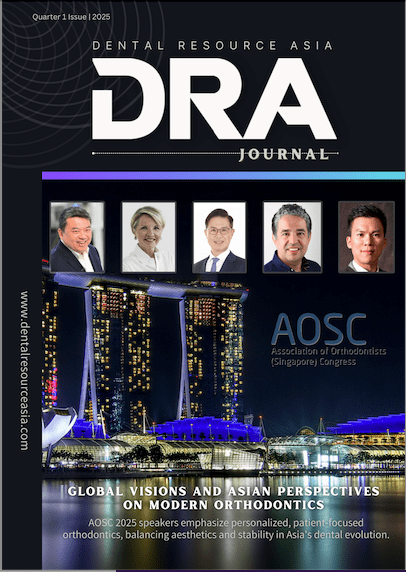Professional Organizations Clash Over Solutions
USA: The American Dental Hygienists’ Association (ADHA) has publicly opposed recent American Dental Association (ADA) resolutions aimed at addressing the ongoing workforce shortage, according to a report by Sarah Butkovic on DentistryIQ.com.
Core Areas of Concern
The ADHA’s response, delivered through a formal press release, centers on protecting patient safety, maintaining professional standards, and preserving dental hygiene licensure requirements. ADHA President Erin Haley-Hitz directly addressed these concerns in a letter to ADA president Brett Kessler, stating that the proposed changes “fail to address oral-systemic health and the underlying issues that are driving many dental hygienists to leave the profession.” She further emphasized that these measures “threaten professional integrity and patient outcomes and fundamentally undermine the dental hygiene profession.”
Alternative Pathways Controversy
A key point of contention revolves around proposals that would create alternative pathways for dental hygiene licensure for non-hygienists, including dental students, residents, and foreign-trained dentists. The ADHA has taken a firm stance against these proposals, asserting that “Allowing those in roles that are complementary to dental hygiene to practice the profession without the same extensive dental hygiene education and practical training is harmful to patients and damaging to the standards of the dental hygiene profession.”
Addressing Workforce Challenges
The report highlights that while the ADHA acknowledges the current staffing shortages across dental healthcare roles, their approach focuses on recruitment and retention of properly trained and licensed professionals. A 2022 collaborative study with the ADA Health Policy Institute identified several factors contributing to professional attrition, including benefit inadequacies, compensation issues, communication problems, lack of professional fulfillment, and workplace culture concerns.
ADA’s Response and Path Forward
The ADA has responded to these concerns through President Kessler, who assured that the organization remains “committed to the highest standards of education and patient safety in dentistry.” Kessler elaborated on the ADA’s perspective, stating, “Our goal is to find practical and responsible solutions to fill critical staffing gaps with qualified, well-trained individuals—without compromising on the standards that our patients deserve.”
ADHA’s Proposed Solutions
According to the report, the ADHA is developing several initiatives to address the workforce shortage, including plans to expand entry-level dental hygiene programs and increase current program capacities nationwide. Additionally, they are developing a new chairside recruitment program aimed at expanding the dental hygiene workforce while maintaining professional standards.
The Growing Recognition of Dental Hygienists in Airway Health
The American Dental Hygienists’ Association (ADHA) has maintained a clear stance on orofacial myofunctional therapy (OMT) since 2020. According to the article, the ADHA “recognizes and supports registered dental hygienists who have received education in orofacial myofunctional therapy (OMT). These dental hygienists can provide orofacial myofunctional assessments and treatment independently in various practice settings and for patients of all ages.”
Critical Role in Early Detection and Prevention
The article emphasizes that dental hygienists often serve as first responders in identifying airway dysfunction. Their position is particularly crucial given that patients typically visit dental offices more frequently than medical offices, allowing for earlier detection of potential issues. The author notes that malocclusion, if left untreated, can lead to various health problems, including sleep-disordered breathing.
The Scale of the Challenge
According to data cited from the Children’s Airway First Foundation, approximately 400 million children worldwide face compromised airways, with 11 million children under age 10 affected in the United States alone. Perhaps more concerning is that 95% of these cases remain undiagnosed. The article also points out that one in four adults have undiagnosed sleep apnea.
Evidence-Based Treatment Approaches
Research from Stanford, referenced in the article, demonstrates that myofunctional therapy shows promising results, reducing “the apnea-hypopnea index by approximately 50% in adults and 62% in children.” This therapy has also shown improvements in oxygen saturation levels, snoring, and daytime sleepiness in adult patients.
The Connection Between Oral and Overall Health
The article emphasizes that oral health extends beyond the absence of dental disease. A recent study cited in the publication revealed a connection between severe malocclusion, daytime sleepiness, and symptoms of sleep-disordered breathing in both children and adults. This understanding reinforces the importance of comprehensive oral health care that considers airway function.
Looking Forward
As the field of dental hygiene enters its 112th year, the profession continues to evolve, particularly in addressing airway health concerns. The article suggests that dental hygienists’ unique position and training make them ideal candidates for bridging the gap between dentistry and medicine, potentially creating more equitable access to comprehensive oral health care.
The information and viewpoints presented in the above news piece or article do not necessarily reflect the official stance or policy of Dental Resource Asia or the DRA Journal. While we strive to ensure the accuracy of our content, Dental Resource Asia (DRA) or DRA Journal cannot guarantee the constant correctness, comprehensiveness, or timeliness of all the information contained within this website or journal.
Please be aware that all product details, product specifications, and data on this website or journal may be modified without prior notice in order to enhance reliability, functionality, design, or for other reasons.
The content contributed by our bloggers or authors represents their personal opinions and is not intended to defame or discredit any religion, ethnic group, club, organisation, company, individual, or any entity or individual.

